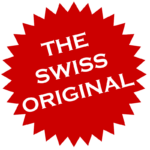Neck Pain / Back Pain Relief – AtlasPROfilax®
What causes neck pain and back pain?
There are many factors involved in neck pain and back pain. Some of these include:
- Abnormal posture
- Changes in connective tissue (fascia)
- Tight Muscles
- Compensation patterns
- Abnormal stress across the disc between the vertebrae
- Pressure on the spinal nerves
- Pressure on the dura mater (the layer of connective tissue around the brain and spinal cord)
- Inflammation
- Abnormal blood flow
- Local release of pain chemicals
Why does this happen?
The muscles that connect the atlas (C1 vertebrae) and the axis (C2 vertebrae) to the skull are the underlying cause of all of the above-mentioned causes of neck and back pain.
These powerful, short suboccipital muscles act as sensory organs as well as muscles. In addition to allowing controlled movement of the head, they keep the head stable. This allows your eyes to remain level, which is important for vision, balance, and posture. These muscles can tighten up as a result of birth trauma, injuries, or accidents such as whiplash, when the brain perceives stress, or for many other reasons. When these suboccipital muscles are contracted, there are major effects on the neck and back that lead to pain.
Did you know:
If your head is pushed forward, it increases the stress on the spinal column by 10 pounds for every inch!
The average human head weighs 10-12 pounds alone, so imagine how much pressure that extra 10-pounds per inch puts on the muscles, nerves, bones, discs, fascia, blood vessels, spinal cord, and dura mater.
Notice when you walk down the street how many people have a forward head. Have you ever lifted a 10-pound bowling ball?
Now picture yourself bent forward to look at your mobile phone. If your head is forward 60 degrees, you are increasing the strain on your neck and back by 60 pounds!
(10lbs per inch x 6 inches = 60 lbs)
That is like having 6 bowling balls hanging from your neck!
What does this cause?
This extreme weight on the neck requires forces other muscles to step up and help to support the weight of the head. This leads to compensation patterns that develop over time.
These patterns include:
- The atlas (C1) vertebrae may become tilted or rotated, affecting the position of all the vertebrae below it.
- One shoulder or hip might become higher that the other.
- Your hips may rotate.
- Your might develop a hump at the base of the neck or a “swayback”.
- The increased stress on the back can create abnormal forces across your spinal, hip, and knee joints.
- The nerves leaving the spine may be compressed.
- Blood flow to and from the brain can be blocked.
- Distortion patterns may occur in the fascia.
- The dura mater, which attached to these suboccipital muscles, may be impinged or stressed, creating microtears or blockage of the fluid bathing the spine and brain – the cerebrospinal fluid.
Any one of these compensation patterns can be the source of neck pain or back pain.
How can AtlasPROfilax® help?
AtlasPROfilax® gets into the deepest layer of the suboccipital muscles, releases the muscles, and reduces the stress that leads to compensation patterns and neck and back pain.
The result can be:
- Better Posture
- Decreased muscle tension
- Improved spinal alignment
- Less pressure in the joints
- Improved nerve and blood flow
- Reduction of fascial distortion
- Better cerebrospinal fluid flow
…all leading to pain relief!
Where can I find AtlasPROfilax®?
There are certified AtlasPROfilax® specialists all over the world.
This article first appeared on the Earthly Living website, home to the only AtlasPROfilax® specialist in the New York / New Jersey area.


